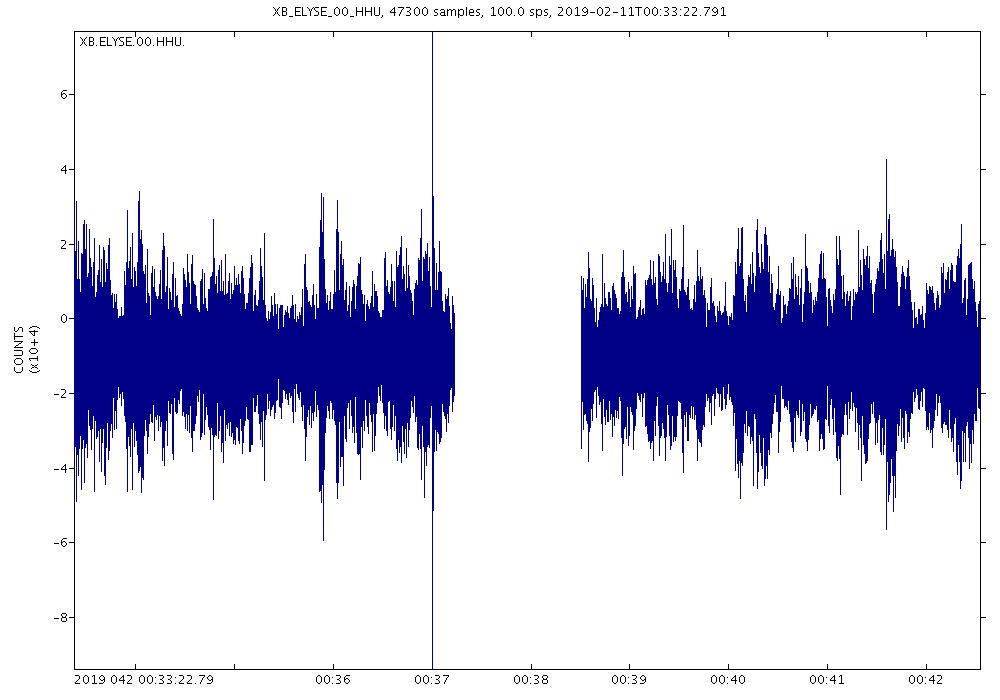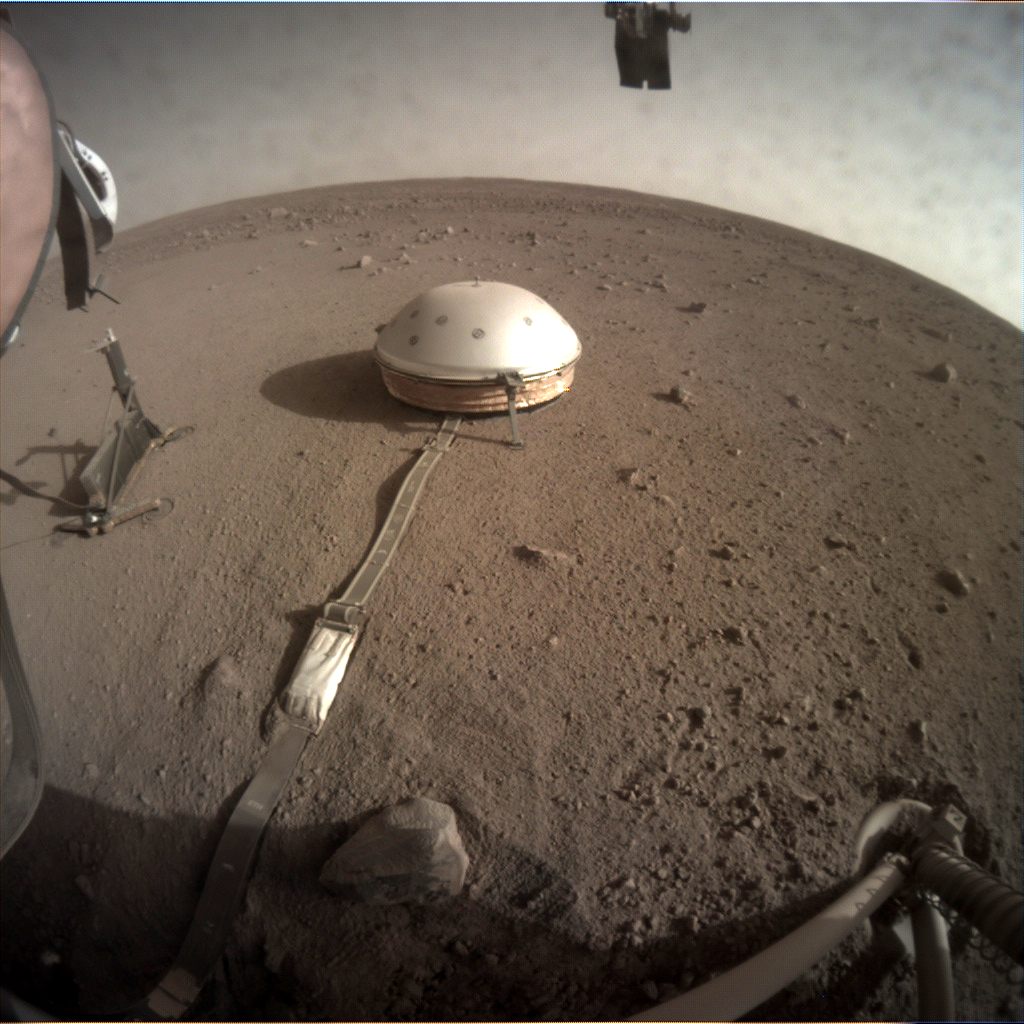Mars InSight mission data from SEIS - Now OPEN to the public
First data release from InSight’s SEIS available from the IRIS DMC
In a key milestone for the InSight mission to Mars, the first data from the SEIS (S
For detailed information, see: SEIS: Insight’s Seismic Experiment for Internal Structure of Mars
See also the NASA’s InSight mission PDS page
See also IPGP’s SEIS page
What you need to know
- These data are from late November 2018 through February 2019.
- The FDSN network designation needed to access the data is
XB, (assigned for 2016-2022). - No naturally occurring seismic events have yet been detected during the time period covered by this first release. The first reported Marsquakes are included in data releases that will occur later in 2019.
- The earliest data were collected prior to the final configuration and installation, and include times while the instrument was still on the lander deck, before the outer wind/thermal shielding was in place, while the HP3 heat probe was hammering into the ground (starting Feb. 28th), etc. This release is very exciting, but caution is suggested when interpreting these data.
- The seismometer is equipped with both a long-period three-axis Very Broad Band (VBB) instrument and a three-axis short-period (SP) instrument.
- There are multiple station designations as follows:
| Station code | Description |
| ——————— | ——————————————————————————————————- |
| ELYSE | Scientific data from final configuration |
| ELYHK | Housekeeping (aka State of Health) data from final configuration |
| ELYS0 | Scientific data from postlanding before instrument deployment |
| ELYH0 | Housekeeping (aka State of Health) data from postlanding before instrument deployment |
How to access these data at the IRIS DMC
- For a complete listing of the seismic data time series data at the DMC, use the irisws-availability service with these parameters that lists the channel and location codes that can be used to request the data.

- To view all of the metadata and view the naming conventions, use the Metadata Aggregator.
- To extract miniSEED data from the DMC using the fdsnws-dataselect service, here is an example webservice request.
- To plot a seismogram using the irisws-timeseriesplot service you can view XB.ELYSE.00.HHU for this time period as an example:
- If you need help with requesting data, please email engine_room@iris.washington.edu and we will assist you.
Education and public outreach
IRIS is an Educational Partner on the InSight Mission, with the goal of engaging students with seismic data from Mars. Classrooms will be able to stream Martian seismic data, allowing students to watch for marsquakes and meteorite impacts with us! In addition, we offer lessons and materials for students to learn about earthquakes, moonquakes, and marsquakes! Learn more at our InSight project page.
Citation and related references
Use of the SEIS data must be at least acknowledged by referencing the SEIS experiment paper (Lognonné et al., 2019) and the SEIS team papers used by the user for the analysis. For a collection of SEIS papers, see Banerdt and Russel, 2017 and Banerdt and Russel, 2019.
All SEIS data used must be referenced by the SEIS data DOI:
http://dx.doi.org/10.18715/SEIS.INSIGHT.XB_2016
In addition, the following sentence must be also provided in the acknowledgement:
We acknowledge NASA, CNES, partner agencies and Institutions (UKSA, SSO, DLR ; JPL, IPGP-CNRS, ETHZ, IC, MPS-MPG) and the operators of JPL, SISMOC, MSDS, IRIS-DMC and PDS for providing SEED SEIS data.
Description of the SEIS experiment:
Lognonné, P., Banerdt, W.B., Giardini, D. et al. Space Sci Rev (2019) 215: 12. https://doi.org/10.1007/s11214-018-0574-6
Series of InSight papers:
W.B. Banerdt and C.T. Russel, The InSight mission to Mars, 211, 2017 (series of 25 articles)
W.B. Banerdt and C.T. Russel, The InSight mission to Mars II, 2019 (series of 26 articles)
We congratulate NASA, JPL, IPGP and their partners in this exciting accomplishment and public release of data.

This image was acquired on May 16, 2019, Sol 166 of the InSight mission where the local mean solar time for the image exposures was 16:40:39.317 PM. Each ICC image has a field of view of 124 × 124 degrees.
Image Credit: NASA/JPL-Caltech
by Rick Benson (IRIS Data Management Center) and Chad Trabant (IRIS DMC)






